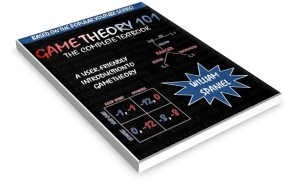Playing a grim trigger strategy threatens the opponent with the biggest potential punishment. Can “nicer” strategies also sustain cooperation?
The answer is yes. This lecture covers tit-for-tat. Like grim trigger, tit-for-tat begins the game by cooperating. Then, for all remaining periods, it duplicates the opponent’s strategy from the previous period. For example, if the opponent defects in period 1, the player will cooperate in period 2.
Tit-for-tat is very robust in “tournament” settings, as the influential book The Evolution of Cooperation documents. Much of this is due to the fact that, unlike grim trigger, it is not as susceptible to accidental mistakes. We therefore cover it in this lecture, focusing on just whether players can use it in a Nash equilibrium. Whether it is subgame perfect is the subject of the next lecture.
Takeaway Points
- The process to check whether tit-for-tat is a Nash equilibrium is similar to the calculation for grim trigger. We simply check whether a player prefers to cooperate in each period on-the-path.
- This is simply a comparison between the total time-adjusted value of cooperation in every period to a sequence that alternates between the temptation payoff and the sucker’s payoff.
- Also like grim trigger, tit-for-tat is a Nash equilibrium if the actors are sufficiently patient.

